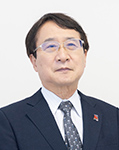Head-out immersion in hot water does not increase serum CXCL1 in healthy men
Article ID: 37
Vol 3, Issue 1, 2019
Vol 3, Issue 1, 2019
VIEWS - 11559 (Abstract)
Abstract
Exercise-induced production of interleukin (IL)-6 results in the expression of chemokine CXC-motif ligand 1 (CXCL1) in mice. Recent studies described the increase in serum IL-6 levels during immersion of subjects in hot water. The present study investigated the effects of a 20-min head-out water immersion in 42 °C water (hot-HOI) on serum concentrations of CXCL1 in eight healthy men. Venous blood samples were taken at rest, immediately after hot-HOI, as well as 1, 2, 3, and 4 h after hot-HOI for measurements of serum concentrations of CXCL1, IL-6, tumor necrosis factor (TNF)-α, high-sensitivity C-reactive protein (hsCRP), while assessing counts of blood cells (CBC) and monitoring core temperature (Tcore). Tcore and serum IL-6 increased during hot-HOI and remained high until 4 h after hot-HOI. However, serum CXCL1, TNF-α, hsCRP, and CBC remained constant throughout the experiment. In conclusion, the results from our study demonstrated that 20-min hot-HOI increased serum IL-6, but not CXCL1 in healthy man.
Keywords
IL-6; TNF-α; hsCRP; hyperthermia; myokine
Full Text:
PDFReferences
- Pedersen BK, Febbraio MA. Muscle as an endocrine organ: Focus on muscle-derived interleukin-6. Physiol Rev 2008; 88: 1379–1406. doi: 10.1152/physrev.90100.2007.
- Keller C, Steensberg A, Pilegaard H, et al. Transcriptional activation of the IL-6 gene in human contracting skeletal muscle: Influence of muscle glycogen content. FASEB J 2001; 15: 2748–2750. doi: 10.1096/fj.01-0507fje.
- Steensberg A, Hall G, Osada T, et al. Production of interleukin-6 in contracting human skeletal muscles can account for the exercise-induced increase in plasma interleukin-6. J Physiol 2000; 529: 237–242. doi: 10.1111/j.1469-7793.2000.00237.x.
- Pedersen BK, Åkerström TC, Nielsen AR, et al. Role of myokines in exercise and metabolism. J Appl Physiol 2007; 103: 1093–1098. doi: 10.1152/japplphysiol.00080.2007.
- Henningsen J, Rigbolt KT, Blagoev B, et al. Dynamics of the skeletal muscle secretome during myoblast differentiation. Mol Cell Proteomics 2010; 9: 2482–2496. doi: 10.1074/mcp.M110.002113.
- Welc SS, Phillips NA, Oca-Cossio J, et al. Hyperthermia increases interleukin-6 in mouse skeletal muscle. Am J Physiol Cell Physiol 2012; 303: 455–466. doi: 10.1152/ajpcell.00028.2012.
- Welc SS, Judge AR, Clanton TL. Skeletal muscle interleukin-6 regulation in hyperthermia. Am J Physiol Cell Physiol 2013; 305: 406–413. doi: 10.1152/ajpcell.00084.2013.
- Leicht CA, Kouda K, Umemoto Y, et al. Hot water immersion induces an acute cytokine response in cervical spinal cord injury. Eur J Appl Physiol 2015; 115: 2243–2252. doi: 10.1007/s00421-015-3206-9.
- Oppenheim JJ, Zachariae CO, Mukaida N, et al. Properties of the novel proinflammatory supergene “intercrine” cytokine family. Annu Rev Immunol 1991; 9: 617–648. doi: 10.1146/annurev.iy.09.040191.003153.
- Nedachi T, Fujita H, Kanzaki M. Contractile C2C12 myotube model for studying exercise-inducible responses in skeletal muscle. Am J Physiol Endocrinol Metab 2008; 295: 1191–1204. doi: 10.1152/ajpendo.90280.2008.
- Pedersen L, Olsen CH, Pedersen BK, et al. Muscle-derived expression of the chemokine CXCL1 attenuates diet-induced obesity and improves fatty acid oxidation in the muscle. Am J Physiol Endocrinol Metab 2012; 302: 831–840. doi: 10.1152/ajpendo.00339.2011.
- Klein C, Wustefeld T, Assmus U, et al. The IL-6-gp130-STAT3 pathway in hepatocytes triggers liver protection in T cell-mediated liver injury. J Clin Invest 2005; 115: 860–869. doi: 10.1172/JCI23640.
- Devalaraja RM, Nanney LB, Qian Q, et al. Delayed wound healing in CXCR2 knockout mice. J Invest Dermatol 2000; 115: 234–244. doi: 10.1046/j.1523-1747.2000.00034.x.
- Omari KM, Lutz SE, Santambrogio L, et al. Neuroprotection and remyelination after autoimmune demyelination in mice that inducibly overexpress CXCL1. Am J Patbol 2009; 174: 164–176. doi: 10.2353/ajpatb.2009.08350.
- Pedersen L, Pilegaard H, Hansen J, et al. Exercise-induced liver chemokine CXCL-1 expression is linked to muscle-derived interleukin-6 expression. J Physiol 2011; 589: 1409–1420. doi: 10.1113/jphysiol.2010.200733.
- Rhind SG, Gannon GA, Shephard RJ, et al. Cytokine induction during exertional hyperthermia is abolished by core temperature clamping: Neuroendocrine regulatory mechanisms. Int J Hyperthermia 2004; 20: 503–516. doi: 10.1080/02656730410001670651.
- Starkie RL, Hargreaves M, Rolland J, et al. Heat stress, cytokines, and the immune response to exercise. Brain Behav Immun 2005; 19: 404–412. doi: 10.1016/j.bbi.2005.03.005.
- Kyriakis JM, Banerjee P, Nikolakaki E, et al. The stress-activated protein kinase subfamily of c-Jun kinases. Nature 1994; 369: 156–160. doi: 10.1038/369156a0.
- Nedachi T, Hatakeyama H, Kono T, et al. Characterization of contraction-inducible CXC chemokines and their roles in C2C12 myocytes. Am J Physiol Endocrinol Metab 2009; 297: 866–878. doi: 10.1152/ajpendo.00104.2009.
- Ohno Y, Yamada S, Sugiura T, et al. Possible role of NF-ĸB signals in heat stress-associated increase in protein content of cultured C2C12 cells. Cells Tissues Organs 2011; 194: 363–370. doi: 10.1159/000323324.
DOI: https://doi.org/10.24294/ti.v3.i1.37
Refbacks
- There are currently no refbacks.
Copyright (c) 2019 Yuta Sakurai, Yasunori Umemoto, Takashi Kawasaki, Daisuke Kojima, Tokio Kinoshita, Mami Yamashiro, Motohiko Banno, Hideki Arakawa, Fumihiro Tajima

This work is licensed under a Creative Commons Attribution-NonCommercial 4.0 International License.
This site is licensed under a Creative Commons Attribution 4.0 International License.












